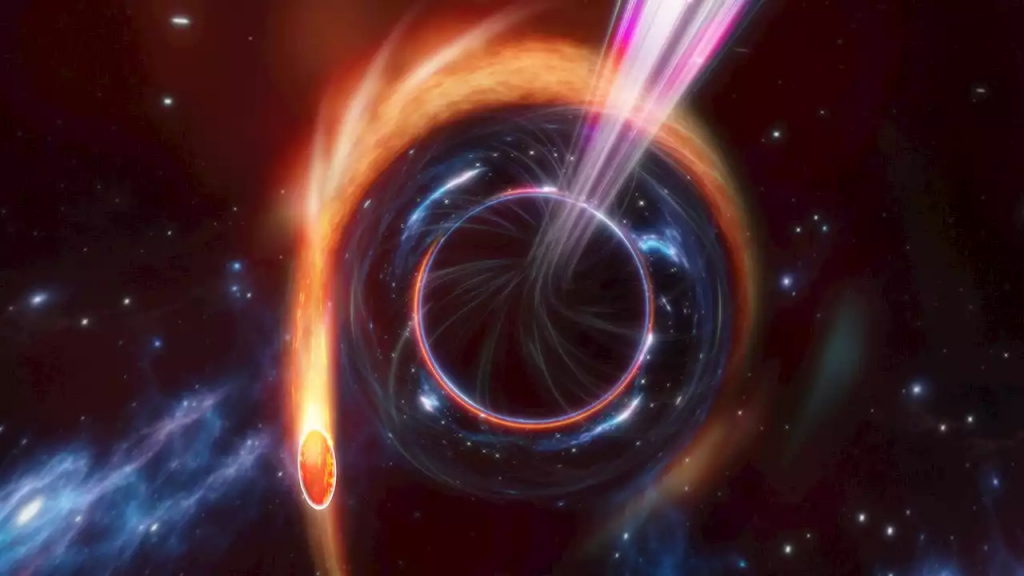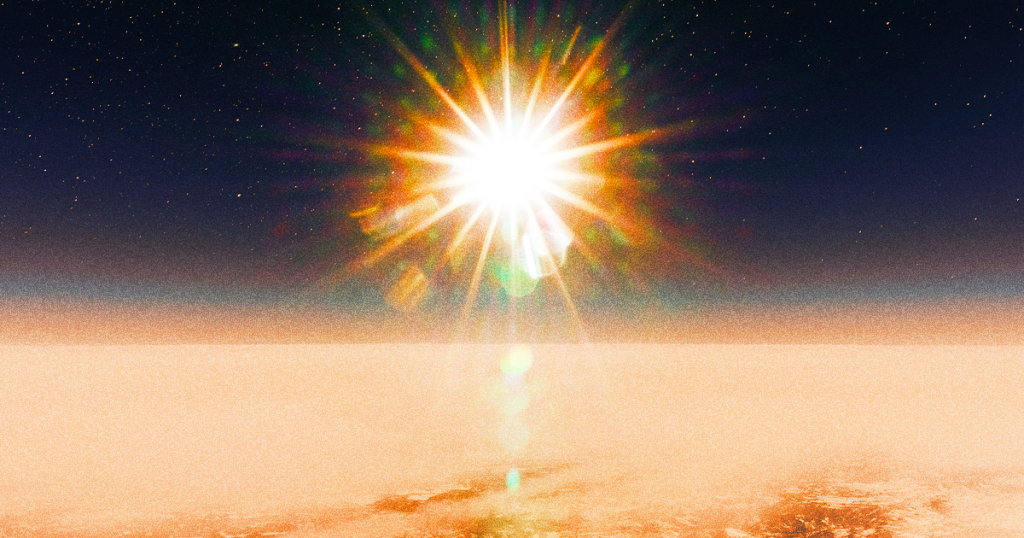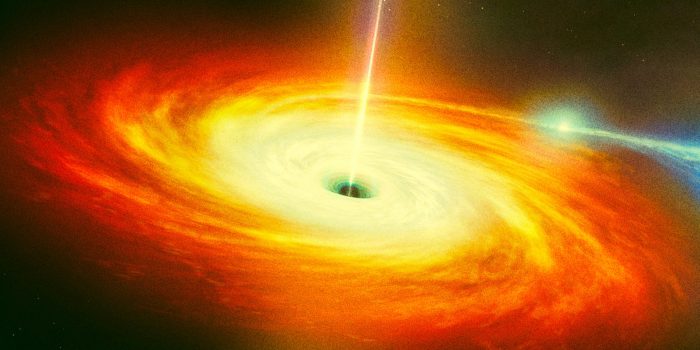Scientists have used the Very Large Telescope (VLT) to observe a black hole more than 8.5 billion light years away gorging on a star. This is the farthest distance at which astronomers have ever witnessed such an event.
They could only spot the grisly feeding in visible light because leftovers of the kill were ejected via a jet that happened to be pointed right at Earth, leading to the publication of two separate studies in the journals Nature and Nature Astronomy.

This ominous form of stellar destruction is called a tidal disruption event (TDE), which occurs when unwitting stars come just a little too close to a black hole, where the massive black hole’s massively powerful and destructive gravity can destroy them despite its incredible mass.
However, apparently, one percent of the time, a TDE causes jets of plasma and radiation to shoot out from both of a black hole’s poles, like a cosmic laser beam through a bullseye.
It is so rare to observe a TDE and it was fortunate that it pointed toward the Earth so our scientists could see it. Otherwise, it wouldn’t have been picked up by the Zwicky Transient Facility back in February, which prompted researchers to aim 21 telescopes at observatories across the world, including the VLT, in its direction.
When the matter from the jet was first detected, astronomers thought it was a gamma-ray burst. However, to much of their surprise, they found a black hole ripping apart a star, especially from so far away.

“This particular event was 100 times more powerful than the most powerful gamma-ray burst afterglow,” explained Dheeraj Pasham, an astrophysicist at MIT and co-author of the Nature Astronomy paper, in a press release. “It was something extraordinary.”
For the jet to sustain being that bright, Pasham estimated that the black hole needs to consume around half a stellar mass each year, a voracious rate of activity that Pasham described as a “hyper-feeding frenzy.”


